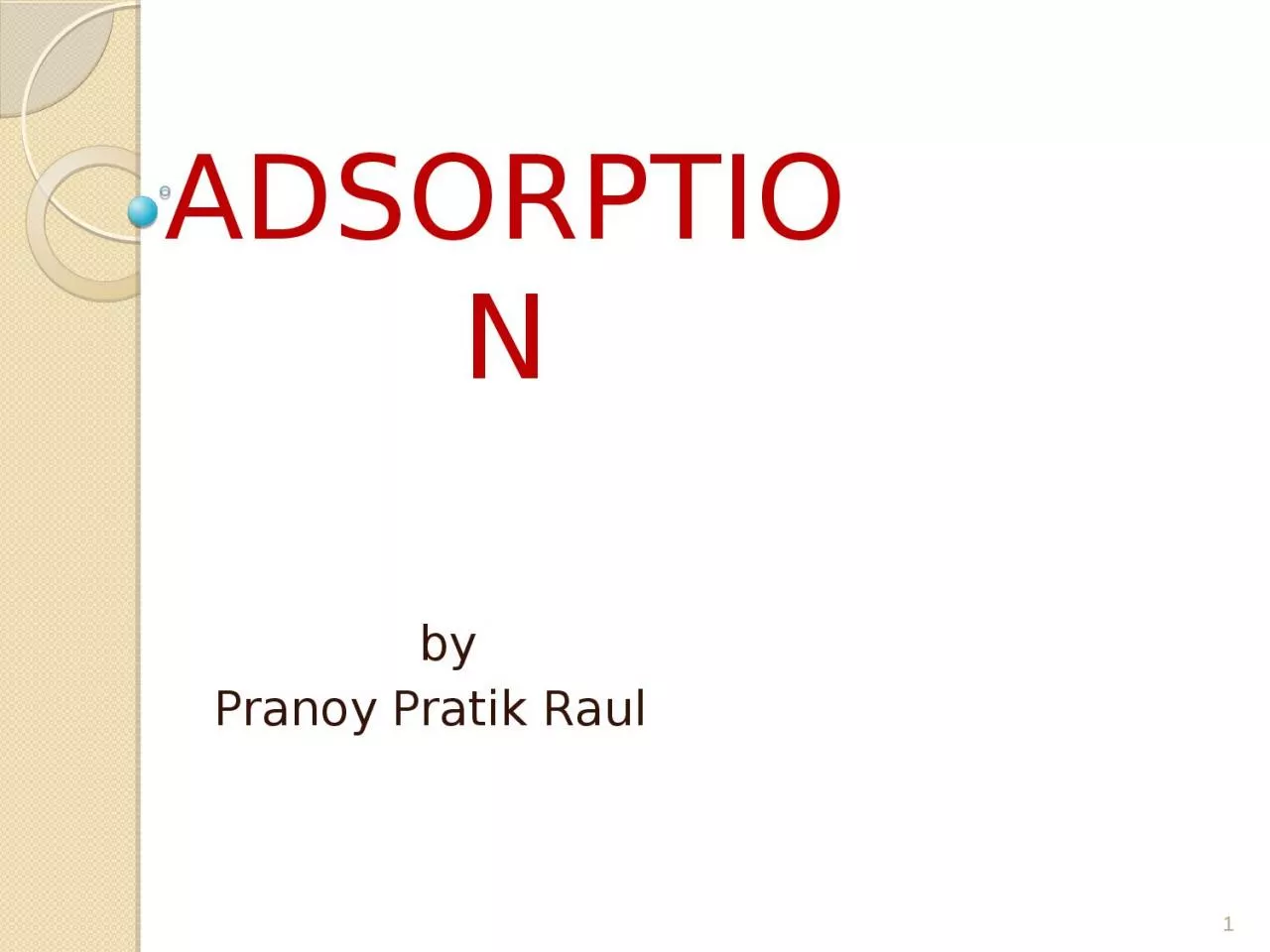

Raul 1 Content Definition Cause Classification Isotherms Applications 2 Only 12 slides What is Adsorption Adsorption is a process that occurs when a gas or liquid solute accumulates on the ID: 1021065
Download Presentation The PPT/PDF document "ADSORPTION by Pranoy Pratik" is the property of its rightful owner. Permission is granted to download and print the materials on this web site for personal, non-commercial use only, and to display it on your personal computer provided you do not modify the materials and that you retain all copyright notices contained in the materials. By downloading content from our website, you accept the terms of this agreement.
1. ADSORPTIONbyPranoy Pratik Raul1
2. ContentDefinitionCauseClassification IsothermsApplications2 Only 12 slides
3. What is Adsorption? Adsorption is a process that occurs when a gas or liquid solute accumulates on the surface of a solid or a liquid (adsorbent), forming a molecular or atomic film (adsorbate)3ADSORBENTADSORBATESOLUTION
4. Absorption vs. Adsorption Surface Phenomenon4Bulk (Volume) Phenomenon
5. Why does Adsorption occur ?Consequence of surface energyAtoms on the surface experience a bond deficiency, because they are not wholly surrounded by other atoms5
6. Types of AdsorptionPROPERTIESPHYSISORPTIONCHEMISORPTIONBondingWEAK, LONG RANGEVan der Waals interactions (e.g. London dispersion, dipole-dipole)..STRONG, SHORT RANGEChemical bonding involving orbital overlap and charge transfer.Enthalpy5-50 kJ mol-140-800 kJ mol-1SaturationMulti-layerMono-layerSurface SpecificityNoYesNatureReversibleMostly Irreversible 6
7. Adsorption IsothermsPlot of the amount of adsorbate on the adsorbent as a function of its pressure (if gas) or concentration (if liquid) at constant temperature.Langmuir isotherm (adsorbed layer one molecule thick) Freundlich isotherm (Heterogeneous adsorbent surface with different adsorption sites) Brunauer, Emmett and Teller (BET) isotherm (molecules can be adsorbed more than one layer thick) 7
8. Freundlich and Küster (1909)Empirical formula:Limitation: Fails at high pressures8Freundlich IsothermQ- Mass of adsorbate / mass of adsorbentp- equilibrium pressure of adsorbatec- equilibrium con. Of adsorbate in solutionK,n- constants
9. Langmuir IsothermIrving Langmuir (1916)Assumptions:Uniformity of sites Non interactionCommon Mechanism Monolayer onlySemi-Empirical Formula:9Q- Mass of adsorbate / mass of adsorbentQmax- Maximum Q to form a mono-layerc- equilibrium con. of adsorbate in solutionK - constant
10. Stephen Brunauer, Paul Hugh Emmett and Edward Teller (1938)Assumptions:Multilayer No TransmigrationEqual Energy Langmuir to each layer10BET IsothermCS - saturation (solubility limit) concentration of the solute(mg/liter)KB - a parameter related to the binding intensity for all layers.
11. ApplicationsActivated CarbonHydrophobic Surface area-500m2/gWaste water treatmentDecontaminant in pharmacySilica Gel and ZeolitesHydrophilic PolarDrying of process airCO2 and Hydrocarbon removal from natural gasVapor Adsorption RefrigerationProtein Adsorption on biomaterials(cells)11
12. 12